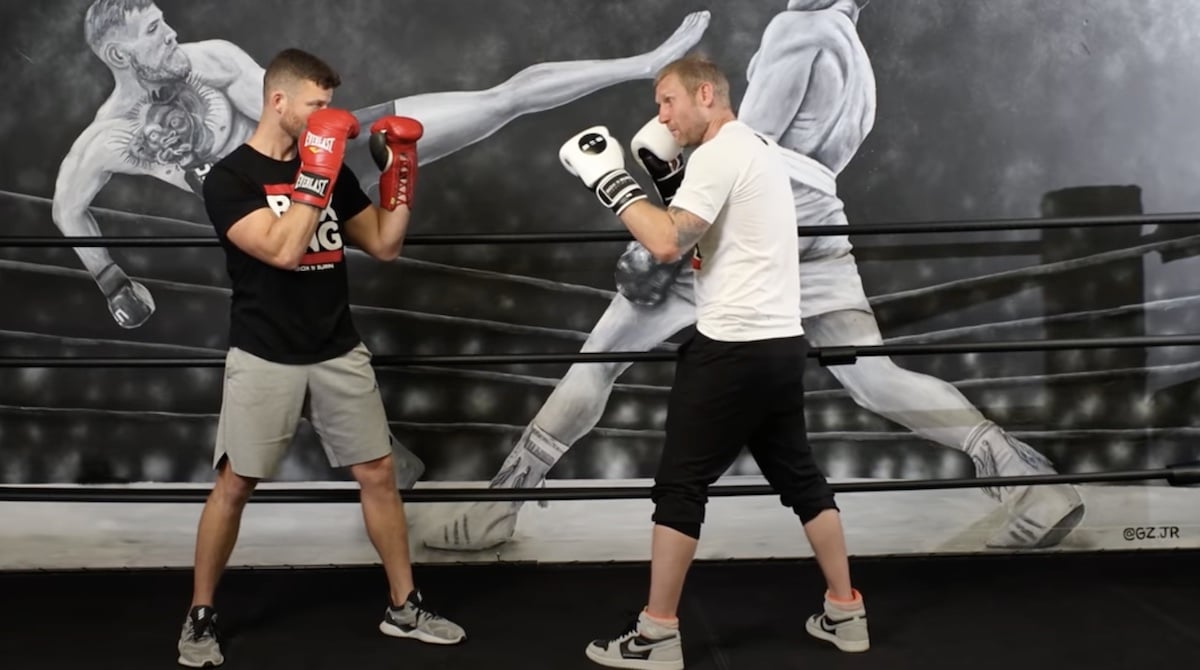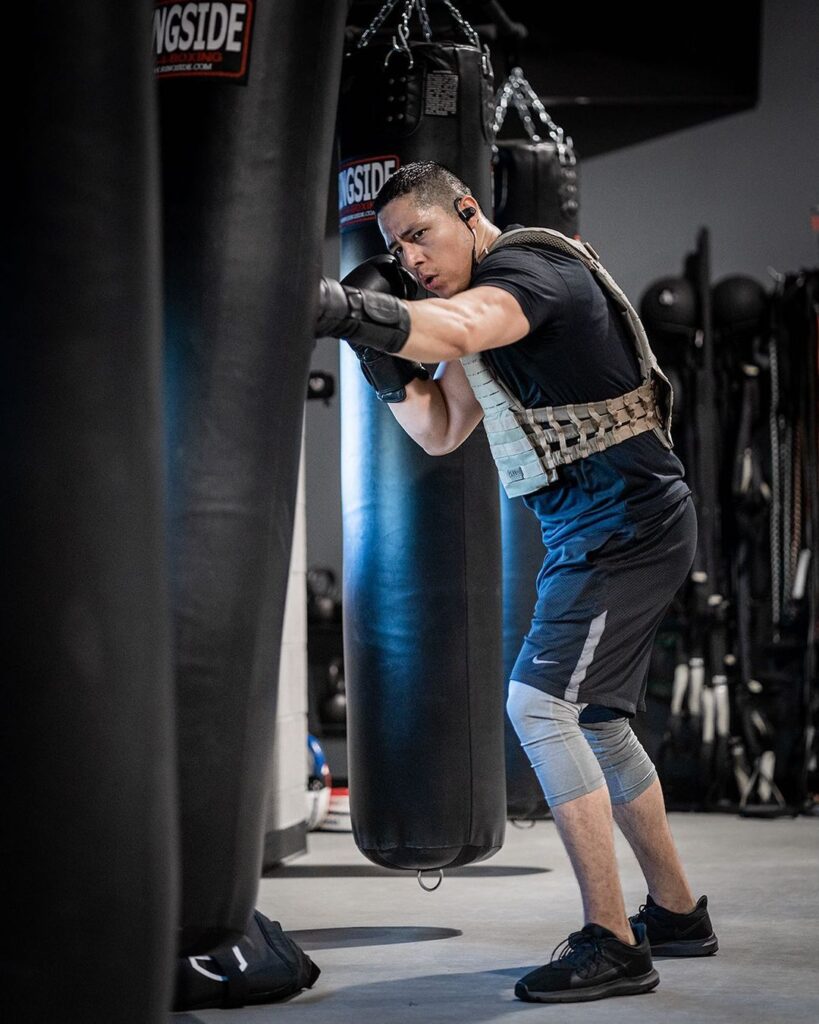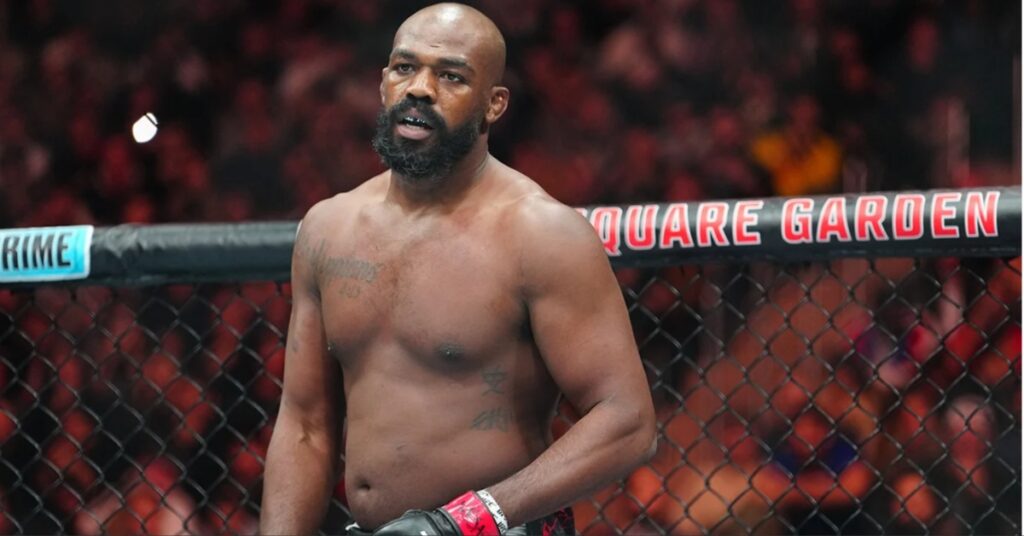The Orthodox Stance

The majority of fighters in the world are either right-handed or stand in the orthodox stance. It’s obviously the most common stance in all striking martial arts since most people in the world are right-handed.
We talked about the southpaw stance in a previous write-up, so let’s talk about the stance that nearly all fighter’s use. Here’s a quick breakdown of everything you need to know about the orthodox stance.
What is the Orthodox Stance?
For new fans that may not know, let’s explain the orthodox stance. It’s a fighting stance, where fighters stand with their left foot in front and their right foot in the back.
Your right hand is connected to your chin or head, while your left hand is in the lead. The lead left hand works as the first line of defense to test the range between you and your opponent.
Ninety percent of the world is right-handed, which means that most that train in striking arts are left-handed.

How was the Orthodox Stance Created?
When people first started studying the science and physics of striking, righties began making realizations about how they fight.
Early fighting practitioners realized that their back hand exerted more power than their lead hand. This obviously due to a law of physics that you can create more force with a greater distance.
The mechanics of a back punch involves the generation of power by turning your hand and shifting your weight. Since there’s more distance between your back hand and opponent means more force is generated.
So, early practitioners also realized that we all have a dominant hand, we do most tasks with. It was just common sense for right-handed dominant people to make their right hand their power hand.
Righties have more control over their right hand, which makes it easy to generate power on their punches.
The Benefit of Fighting in the Orthodox Stance
The biggest benefit to being a fighter that stands in the orthodox stance is that you’re in the majority. You’re going to have an easier time picking up the fundamentals of striking easier when more people stand like you.
Not just learning how to strike, but also how to move, defend, and set up traps. Righties definitely have a leg up on lefties since southpaws have to learn everything in reverse.
Do Southpaws Stand in the Orthodox Stance?
When you train around more experienced fighters, you will learn something that may surprise you. Not all fighters that fight in the orthodox stance are left handed and vice versa for southpaw fighters.
When a fighter begins to develop their skills, they realize that they don’t have to stand in just one type of stance. They can begin switching stances to throw their opponents off and land a variety of different punches.
Many fighters with a strong back hand like to switch their stance and put it in front. Enabling them to throw more powerful jabs and hooks with their left hand in front.
There’s many left-handed fighters like Paul Daley that chose to stand in an orthodox stance. He would do this to set up his deadly left hook that put many fighters to sleep during his career.
Tips For Standing in the Orthodox Stance
If you’re a righty just getting into training in MMA, boxing, or Muay Thai, here are some tips for standing in the orthodox stance. (Note: Many of these tips can also be used if you stand in the southpaw stance)
Hands Up!
No matter what stance you stay in, the same rule applies whether you’re practicing, boxing, Muay Thai, or MMA. Keep your hands up!
Your lead left should be slightly rotated outward to parry and catch punches. Then your back right hand should either be in front of your chin, against your chin, or the side of your head.
This is basic 101 boxing and striking to protect yourself at all times.
Chin Down
Whether you’re a righty or a lefty, you always need to keep your chin down. Your chin is the main target that your opponent will be looking to hit.
If you develop a bad habit of keeping your chin up, your opponent will have an easier path to hit you. That’s why you need to be mindful of lifting your chin and try to keep it down.
Bend Your Knees
Any good fighting stance involves that you have a bend in your knees. It allows you to be more fluid with your movement and exert more speed and power on your strikes.
When you’re shifting your power forward, you have to bend your knees. Which is why you always need a little bend in your knees when sparring or drilling technique.
Don’t Be Flat-Footed
Along with always keeping your knees bent, you must never stay flat-footed when practicing technique. When you’re fighting flat-footed, your movement and speed of your strikes is noticeably slower. It also makes it easier for your opponent to hit you.
That’s why you should try to stand on the balls or center of your feet with your heels slightly off the ground. Standing like this gives you more bounce in your step, allowing you to move faster and have more fluid technique.
Feet Placement
Just as important as not being flat-footed is your feet placement in a fighting stance. Depending on the striking art you practice, the placement will slightly vary, but they all share one thing in common.
Your feet need to be placed in a way where you have full control of your balance. Either keep your feet shoulder width apart or just a half step further, so as not to compromise your balance.
Also in an orthodox stance, have your left foot slightly ahead of your right foot. Never keep your feet aligned with one another in a fighting stance.
Remember to Shift Weight
The three tips above go together for this tip, which is to remember to shift your weight. Any time you throw a punch, kick, or elbow, you create power by shifting your weight.
The power is generated in your back foot, then as you shift towards your opponent, your power gets transmitted. Then as you shift your weight forward, this power gets thrown outward towards your opponent.
Turn Your Punches/Kicks Over
One thing that you can do to create more power on your strikes is to learn how to turn your punches/kicks over. Do a quick test where you throw a punch or roundhouse without turning your hand or foot over.
Now, throw one of these strikes where you turn your hand or foot over. You’ll notice a huge difference in the force you created by turning your hand/foot over when you threw your strike.
That is why you alway need to remember to turn your punches or kicks over to create more powerful strikes.
Lead Foot Placement
Whenever you’re fighting another person that’s in an orthodox stance, you must win the battle of foot placement. Beginner orthodox fighters are taught the importance of keeping their lead foot between their opponent’s feet.
This gives them an easier path to land strikes to their opponent’s body and head. Don’t forget this tip when you fight someone in an orthodox stance.
Learn to Move to the Right
Generally when you first learn how to move in an orthodox stance, you’re more comfortable moving to the left. Righties will first learn how to move in their stance and will always go left. This is because it’s more comfortable moving towards your lead leg than your back leg.
That’s why it’s really important for orthodox stance fighters to learn how to move to their right. By moving to the right during sparring, it will knock off the rhythm of a fellow right-handed fighter.
Doing this could also jam their front hand, disabling them from throwing jabs and lead hooks. These problems reading the range will limit their punches and give you an advantage over your opponent.
Learn to Cut Off the Ring/Cage
Another tip that both orthodox and southpaw fighters use is to learn how to cut off the ring or cage. There is a special art in knowing how to cut off your opponent.
If you’re good at cutting off your fight area, you have a huge advantage over your opponent. You’re able to control the distance and set up your combos easier than your opponent.
By learning how to cut off the ring, you will keep your opponent on the defense and backing up.






